Our content is reader supported, which means when you buy from links you click on, we may earn a commission.
How Colleen Gratzer Used Her Experience in Graphic Design to Create Successful Courses in Accessibility
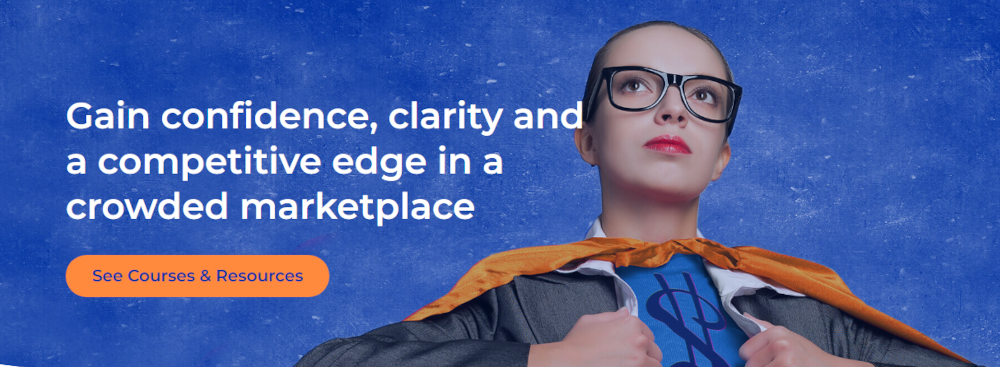
- Who: Colleen Gratzer
- Website: creative-boost.com
- Course Topic: Graphic Design Training
- Interesting Stats: Four-figure months and some in the low five figures
Who are you and what course have you created?
I’ve been in the graphic design industry for over 25 years and have been a speaker at international design industry and accessibility events such as CreativePro, the Page Builder Summit, WordPress Accessibility Day and others. I’ve also spoken on many podcasts.
I’m chief creative officer at Gratzer Graphics LLC, which I started in 2003. We provide design and accessibility services to mostly nonprofits and government agencies.
I started my second business, Creative Boost, in 2018 to help other graphic designers after being in the field myself for two decades. As part of that, I started a podcast, Design Domination, to build this new graphic designer audience.
My courses are:
What market does your online course serve?
I specifically target freelance designers of differing skills with my courses, but I also help employed designers who may need to learn these skills for their job.
The Accessible PDFs From InDesign course teaches graphic designers the entire process for creating accessible PDFs from InDesign. It also makes them faster, more efficient designers using best practices in InDesign, which most designers don’t take advantage of.
The Foundations of Website Accessibility Course is for web designers and web developers. It teaches them how to build better websites that are accessible to people of all abilities, reach more users and get better results.
The Accessible Branding & Design course is for logo designers, graphic designers, and web designers. It teaches how to create accessible brand color palettes, style guides, and accessible designs for infographics, documents and websites.
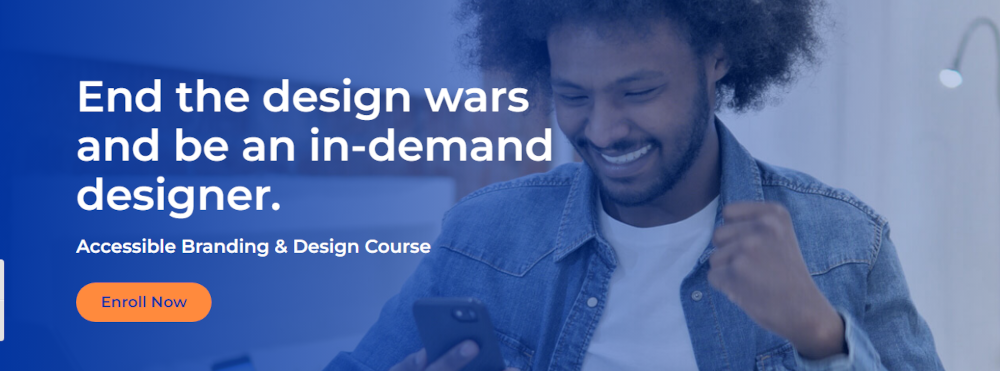
What’s the biggest benefit of taking your course?
All of my courses are accessibility focused, which helps designers’ work reach a larger audience and be more inclusive or meet a legal requirement for compliance with accessibility laws.
But there is a huge benefit for designers themselves. They gain confidence, clarity, and a competitive edge in a crowded marketplace.
Freelance designers can win more work by eliminating 99% of their competition. They can also be more confident about their work and charge more. They learn how to make money immediately with accessibility before they even finish taking the courses.
Employed designers increase their employability.
Designers can finally end the design wars with clients or coworkers too.
How did you get into the market?
I got my start formally studying graphic design in college in the late 90s. Then I freelanced and held a full-time job for seven years before going out on my own full-time. I made more money freelancing than at my full-time job, so I quit to work full-time in my business 20 years ago.
I was always busy and made good money. But I wasn’t always doing work I loved. Sometimes I took on work I hated.
I lost out on potential work that I wanted from new clients. It was always because they gave the job to someone with more expertise in a certain industry or they were more specialized, or my price was too low or too high. Like the three bears—sometimes it was never just right.
There was a ton of competition, and I didn’t know how to set myself apart—and how I thought I was setting myself apart wasn’t working.
I lost a lot of confidence. Some clients didn’t take me seriously enough as an expert even though they called me one. My business felt stuck, and I was beyond fed up.
In 2016, I got into accessibility by accident, which completely transformed my business.
I eliminated 99% of my competition. I went from being a small fish in a big pond to being a big fish in a small pond. Clients from all over the world started coming to me for accessibility work.
I started winning almost every single project I estimated. I started charging more for this expertise, and clients stopped questioning the price.
My design decisions stopped getting questioned. I became much more confident when talking with clients. I started getting a ton more respect.
Accessibility has been an absolute game-changer for my business. I want to help other designers do that, too but also dive deeper with their design skills to become better designers.
It’s funny because I didn’t set out to create courses. My intention with Creative Boost was actually to start a paid design mentoring community to help other designers after being in the field myself for two decades. I thought I would have just one course and that it would be a small side thing. But I now have three courses, and they’ve ended up being the focus of my business instead.
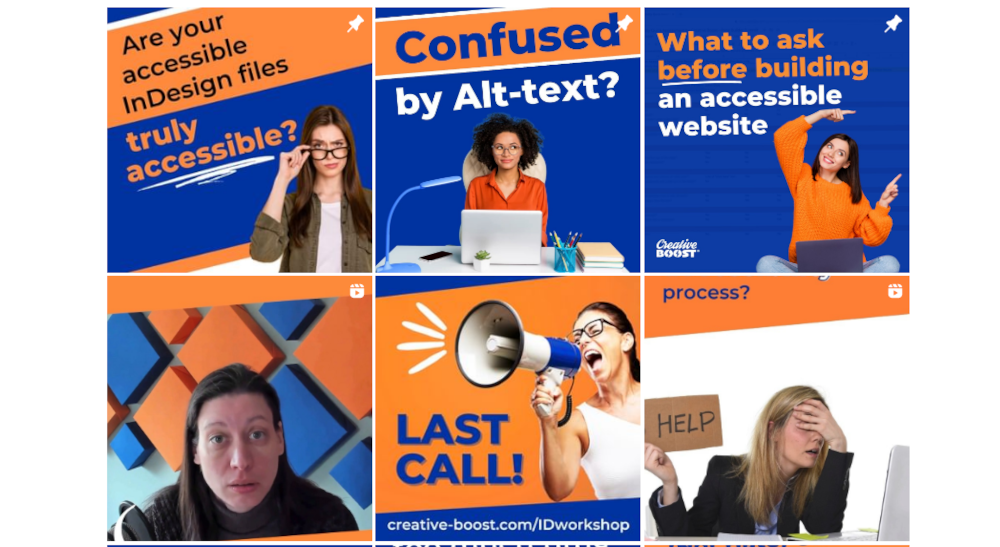
Why did you decide to create an online course in the first place?
Two reasons: overwhelm/confusion and need.
Overwhelm and Confusion
Accessibility is very niched and has been getting more attention over the past few years due to the increasing number of website accessibility lawsuits.
Accessibility is an overwhelming topic, and trying to figure it out on your own can be very difficult. Some guidelines are open to interpretation, and some are contradictory or just hard to understand. My students often say that the accessibility guidelines make their eyes glaze over.
Even if you think you’re abiding by the guidelines, you still might not end up with an accessible website or document. In fact, many designers and developers who think they’re building accessible sites or documents aren’t.
There was nothing out there in plain English, providing a step-by-step process, talking about how to sell and market accessibility, or offering support. This is a complex and technical topic, and it’s important to know you’re doing the work correctly.
There is also a lot to do, so you really need training and a step-by-step process to make sure you cover everything. I had formal training in accessibility and also worked with other accessibility specialists to get feedback. That helped me create my processes for document and website accessibility.
I created the Foundations of Website Accessibility course first, after several colleagues—web designers and developers—asked me to teach them how to make websites accessible, which is a service I provide to clients.
Need
There was a huge need for accessibility training for designers. Accessible design starts with the color palettes designers create as part of a brand, document design or website design.
So my courses help fill these needs.
Did you have any moments of doubt before you created/launched it?
Yes! My first course was Foundations of Website Accessibility. I was afraid people would think that the course was the be-all, end-all to accessibility, or that they would expect me to know everything. But websites can be so complicated. There are so many different themes, plugins, etc. that covering every scenario and tool is impossible.
So I make it clear what the course does and does not cover.
If so what made you turn it around and do it anyway?
More designers need to get into this, and accessibility isn’t about being perfect. It’s important that they get into this and get started somewhere. Little changes that they make can have a big impact.
What’s your online course like?
My courses are prerecorded videos. The two larger courses—on InDesign and web accessibility—have about 8 to 9 hours of content.
Of course, being an accessibility educator, the videos all have captions and transcripts, and they’ve been proofread for accuracy.
I also provide:
- comprehensive checklists and handouts as PDFs (accessible, of course!),
- quizzes to help reinforce key points, and
- support in a Facebook group.
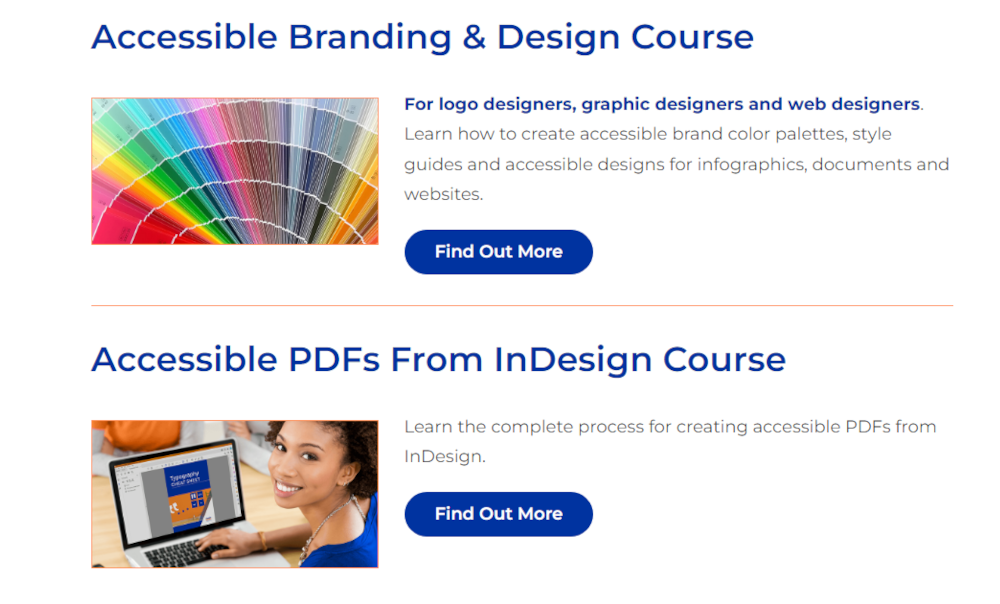
How long did it take you to create your course?
My first course, Foundations of Website Accessibility, took me about a year. I worked on it as I had time.
I started by refining the checklist I had for my own website design and development workflow, which was set up in phases that make sense for a website workflow—from the sales process to designing, development, addressing the page content, and ongoing support for clients.
Then I used that as an outline, which became the modules for the course. It also follows a logical workflow for designing and building an accessible website.
You must first understand accessibility, different types of disabilities, and some of the laws. So that became the first module.
Module 2 is on the structure for an accessible website. This helps you create an accessible foundation.
Module 3 is about color and contrast, so that pertains to the design.
Next, Module 4 is about formatting text and typography. Then Module 5 is about dealing with images, audio, and video. Module 6 is on interactive elements—hyperlinks, buttons, and forms. These all deal with page content.
Module 7 is about testing the website and ongoing compliance. Accessibility is not set and forget it. It’s an ongoing process, so it’s important to know how to maintain accessibility once the website is launched.
Next, I created the Accessible Branding & Design course. That did not take nearly as long because I took module 3 from the web course and built it into its own course for designers who don’t necessarily build websites.
I added content about branding and style guides and examples that covered logo design, document design, infographics, and websites. So it is not website specific. It covers all aspects of design.
Then I created the Accessible PDFs From InDesign course, and that did not take as long as the web course, even though it too is seven modules.
I set up the modules similarly and based on the checklist I created for my entire accessible InDesign and PDF process.
Tell us a little about the process of launching your course and getting your first sale(s).
While I was still creating my first course, I spoke on other people’s podcasts about web accessibility. This was to build up awareness and marketing for it in advance.
I led people to a web page where they could opt in about their interest in the course. I don’t remember if I had a free guide at that time. Plus, I didn’t have an email funnel. So people opted in and then didn’t hear from me for several months, until I officially launched the course.
I started by doing a soft launch of the course first. I did this live and at a discounted rate to a small group before I ever launched the prerecorded, on-demand version. Because of this, I gained feedback to see if I needed to change anything, make anything clearer, what did they think of it, etc.
I got great feedback and didn’t need to re-record anything. But I wasn’t happy with the audio quality of the videos from having recorded them live on Zoom and where I wasn’t in a sound-treated space. So I did re-record them.
Then I officially launched the course and let my email list know.
I expected a bunch of people to rush to sign up, but that did not happen. It was a huge letdown.
I emailed some people and asked why they didn’t enroll.
Some people thought the cost was too high. Others didn’t think accessibility was important to their clients. Some wanted to continue researching on their own.
A month or so later, I got my first sale and was giddy with excitement!
So when it came time to launch the InDesign accessibility course, I did things a lot differently.
I had a waitlist that I actually nurtured. I offered special waitlist pricing and bonuses to everyone who signed up from the waitlist. - Colleen Gratzer Click To TweetThen I offered slightly increased early bird pricing to everyone else for a limited time during that initial launch period to create urgency.
That made for a very successful launch!
Do you have a lead magnet?
Yes! I have three PDF guides and a webinar.
One free guide is called Understanding and Selling Accessible Websites, which gives designers and developers a quick overview of accessibility and disabilities and talking points to have the conversation with clients. This is for web designer and developers who are looking to get into web accessibility and maybe want to gauge their client’s interest in it.
The second free guide is 5 Mistakes Developers Make When Building Accessible Websites. I created this because many web designers and developers who think they’re creating accessible websites aren’t. This guide is to educate those web designers and developers who aren’t aware they have a problem.
A third free guide is called Alt-Text Made Easy. Alt-text on images is a very confusing topic for people. So the purpose of this guide is to be helpful but also to demonstrate my knowledge on just this one topic, which is just one part of accessibility. It gives people a small taste of the depth I go into in my course.
I also have a prerecorded webinar for a lead magnet. I’m testing that out now on the thank you pages for my free guides.
I also do live webinars periodically as well. So far, these have netted the best results. I get close to a 50% attendance rate.
I’ve found all of these methods all to be very helpful in getting people interested in accessibility and my courses.
What’s the traffic strategy that works best for you?
I have multiple sources for traffic:
- My podcast and YouTube channel (Design Domination)
- Free guides
- Evergreen webinar
- Live webinars
- General email list
- Facebook groups (mine and others)
- Social media
- Facebook ads
I am currently working on refining my Facebook ads as a means to get more traffic.
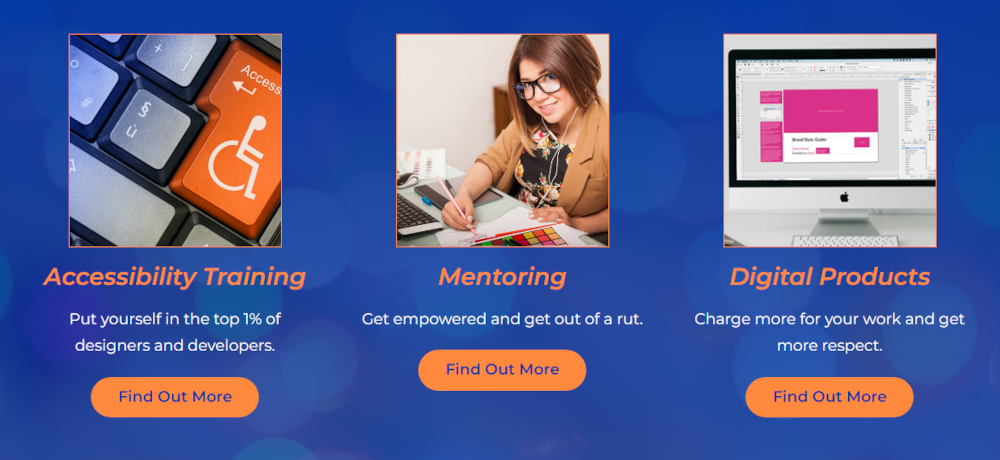
What online course platform are you using?
I use Teachable.
Do you like it?
Yes.
Are there any features you wish it had?
There are some accessibility tweaks I’ve asked them to make, but it’s pretty good overall in that sense.
I wish I could reuse the same videos and images across multiple courses instead of uploading them to each course.
What made you decide to use your chosen platform over others?
I looked at several platforms and narrowed it down to Teachable and Thinkific. At the time, Teachable may have cost less per month. But they also take 5% of your sales. I wasn’t sure how many sales I would make, so I wasn’t sure if it would make sense to pay for a higher plan on their platform where they don’t take 5% or to go with Thinkific.
What I had to have, though is accessible checkout and course pages. Accessibility is the driving factor for any tool I use.
I didn’t want to use my own website to host it because it takes a lot of resources, and if your website goes down, so does your course. I also didn’t want to be responsible for all the things that a course platform takes care of—lost passwords, security, taxes, etc.
What other tools do you use to run your online course business?
I use Zapier and AirTable to keep track of sales and enrollments. When someone enrolls, a zap gets sent from Teachable to AirTable. I have a different tab for each course, so I can easily see the sales breakdown by month and year. In addition, I use AirTable to track the signup source, certificates of completion, coaching calls they’ve used, testimonials given, etc.
I use Demio for live webinars. It’s easy to use, even with OBS.
Then I use WebinarKit for my evergreen webinar. I got a lifetime deal on that.
All sales, opt-in, and registration pages are set up on my website, which is in WordPress. I can easily control the look of them as well as their accessibility.
I’ve been using MailerLite (Classic) for all of my emails and automations. I was pretty happy with them until recently. So I am switching to Active Campaign soon, as a result of a mail delivery issue MailerLite has been experiencing for several weeks now. People were opting in to my free guides and then not getting the emails!
What books or training programs have you found useful on your journey to a successful business owner that others might find valuable too?
I read Pat Flynn’s Will It Fly? book. I also read my friend Mike Killen’s Five-Figure Funnels book. Both were insightful.
After the launch of my first course, I worked with a coach to refine my sales page and create free guides for opt-ins. But I was still feeling a bit lost and frustrated that sales weren’t moving as fast as I’d like.
So then I invested in a course coaching program that gave me the full process from what to do before creating the course to creating it and your funnel, marketing it with organic and paid traffic, etc. Having that process and support was great, especially when I went to release my third course.
Do you have any big mistakes you’ve made along the way that you’d be willing to share?
My biggest mistake was not nurturing the email list before releasing my first course. I could have used that as an opportunity to educate and excite people about the upcoming course.
I also wish I had used the same launch process for my first two courses to create that urgency.
Please share some idea of revenue.
I’ve had some months that were low to high four figures and some in the low five figures.
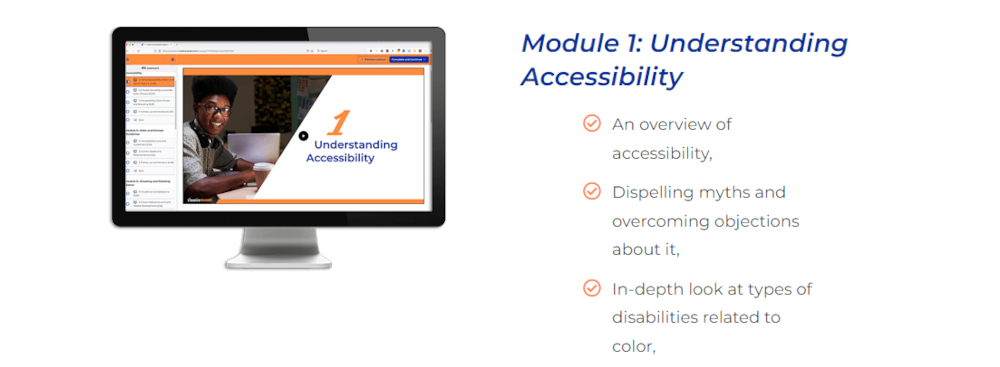
Please tell us a little about what the money you’ve earned from your course has done for you.
The extra course income has helped me focus on that business instead of client work. - Colleen Gratzer Click To TweetIt’s also created some peace of mind having some recurring revenue, even though it hasn’t been consistent yet.
In addition to revenue are there any numbers you would like to share?
I recently spoke at an online summit and, using their suggestions for list building, I was able to add about 150 people (maybe more) to my email list.
I offered a freebie at the end of my talk. People had to opt-in to get it. Then I sent them a series of emails, with a P.S. with an upsell and later in the sequence an email with a special offer on one of my courses.
What has creating your course done for you personally?
I definitely feel like I’ve accomplished something, and it’s funny because I didn’t set out to do this initially. However, I have much more work to do.
I also have more confidence. Hundreds of designers have gotten so much value out of my courses. They like my approach. They like my process. That means so much to me.
It makes me so happy to know that the way that I’ve sought out to help them—breaking down a complex topic into plain English step by step—did just that for them.
Do you have a story of a transformation from any of your clients?
One of my students won five jobs just by bringing up the topic of accessibility to clients, and he hadn’t even finished the course. That made my day because I’ve experienced that too. My courses are not just about learning accessibility but helping designers gain confidence, clarity, and a competitive edge in a crowded marketplace.
Others have told me they’ve become more confident designers and have ended the design wars with clients.
What advice do you have for people just starting out?
My advice for others looking to get into course creation is to understand that creating the course is easy. Marketing the course will demand most of your time. It’s also an ongoing process. There is no such thing as “passive income.” You’ll be actively marketing all the time.
You also want to make sure your course solves a specific problem. Don't create a course that tries to solve every problem. - Colleen Gratzer Click To TweetThat’s because a course like that will seem overwhelming. It will take too long for people to take it. It will take too long for them to get results.